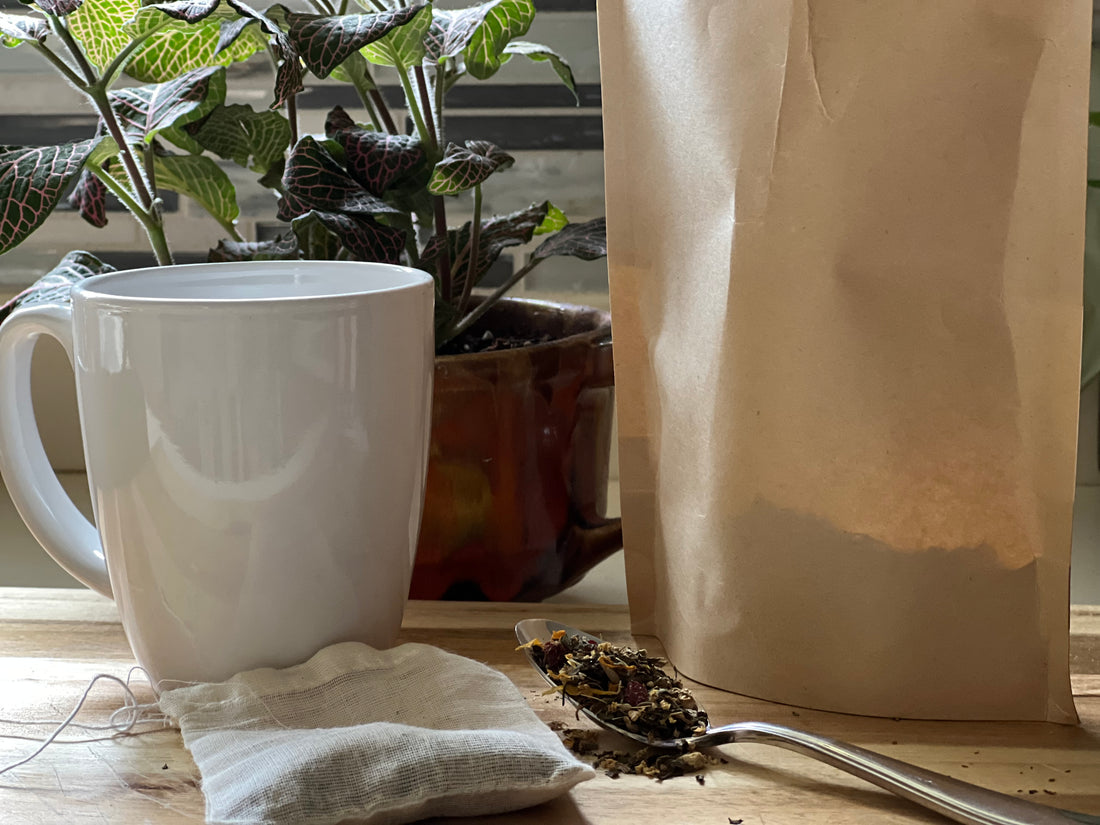In the United States, flu season occurs in the fall and winter, according to the Center for Disease Control (CDC). You may start seeing posts and advertisements for flu prevention and cold remedies as the fall approaches. It’s always recommended to review your health and any medicinal remedies with your medical doctor, including some of the natural ingredients I’d like to share.
Herbs and essential oils can aid in reducing symptoms or shortening the duration of Illness. Many herbs are being studied today for their healing properties, but generally remain untested or require more research to satisfy scientific standards. But we do know from many recipes that have withstood the test of time, and anecdotal evidence, that they may help to soothe symptoms of aches, congestion, coughs, and more.
A good place to start might be your home garden. Plants, roots and herbs such as ginger, garlic, echinacea, and elderberries have properties that can help during the cold and flu season. Below are some of my favorite herbs and plants for fighting a cold or flu:
Ginger: (Zingiber officinale) is an herbaceous perennial from the tropics. Gingerol, the primary phytochemical compound, is known for shortening the common cold. Try steeping ginger tea; it may help flush toxins and promotes blood circulation.
Eucalyptus: (Eucalyptus globulus) is a common ingredient in many over-the-counter cold medications, like cough drops, cough syrup, and chest rubs, eucalyptus has antibacterial and antiviral properties. Additionally, the vapors from its essential oil perform as an expectorant to loosen chest congestion.
Peppermint: (Mentha x piperita) can be used as a natural decongestant and fever-reducer. It contains menthol, an ingredient found in topical rubs that helps relieve congestion.
Elderflower: Elderflower is simply the flower of the same plant as elderberries, Sambucus nigra, or its North American cousin, Sambucus canadensis. Elderflower is a diuretic, laxative, antispetic, antiviral and also has anti-inflammatory properties. It helps fighting flu and respiratory disturbances by encouraging water to leave the body, helping you to “sweat it out”.
Calendula: (Calendula officinalis) acording to the Herbal Academy of New England, it is "an antimicrobial to help the body resist pathogens such as bacteria, viruses, and fungi. Research has shown that calendula is effective against flu and herpes viruses (McIntyre, 1996). Calendula helps support the lymphatic system, and can help to shift lingering infections and swollen glands.
Rose Hips: (Rosa canina) are packed full of vitamin C, E and B, and other antioxidants and minerals. They help to regulate digestion (both constipation and diarrhea), relieve stomach cramps or nausea, have a diuretic effect, and are excellent for detoxification.
Thyme: (Thymus vulgaris) is a low-growing perennial shrub with a scrambling habit. It is traditionally used in simmering savory dishes such as sauces, soups, and stews. A known expectorant, fresh or dried thyme leaves can help to calm coughs and loosen bronchial congestion when steeped into a tea, or used for vapor inhalation.
With all these natural ingredients you can promote good health and strengthen your immune system. We’ve got a great tea that has many of these fabulous flu fighters already blended. Try the Lucky Chameleon Cold & Flu Brew tea and kick your cold’s butt!
Disclaimer: I am not a doctor. While I do seek scientific confirmation of the safety and effectiveness of the herbs and remedies I use, remember that using remedies is a personal decision. Nothing I say on this blog is approved by the FDA or intended to diagnose, treat or prevent disease. All things on this blog are my opinion or the opinion of others. Also, if you have a medical condition, are taking pharmaceutical drugs, or are pregnant, please consult your physician prior to taking herbs.

